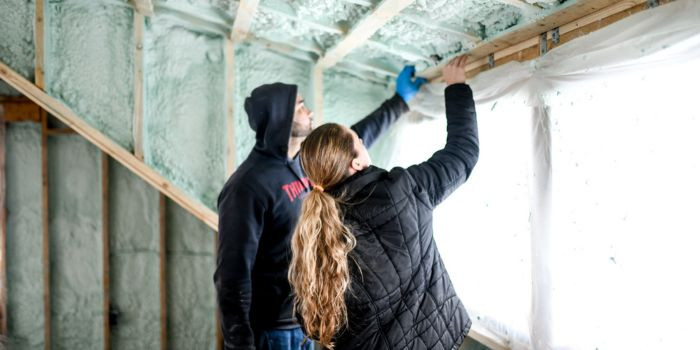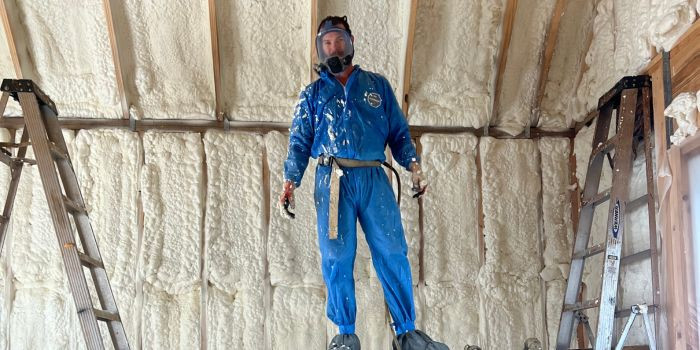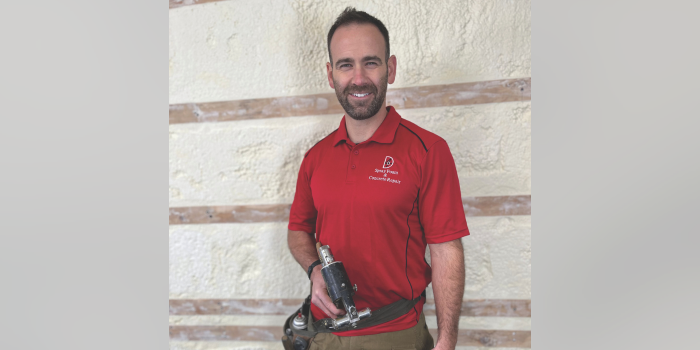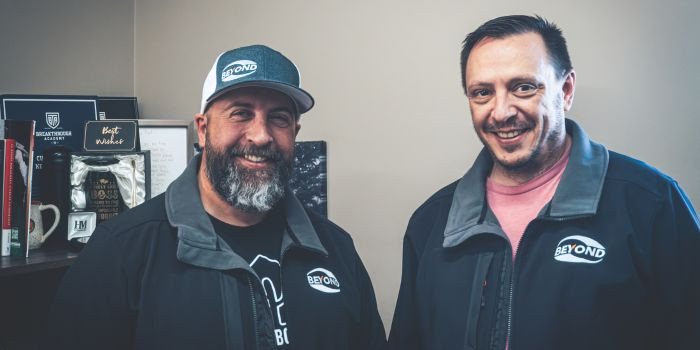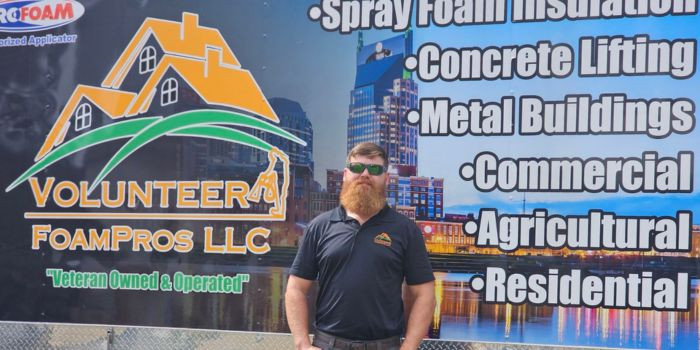Insulating A Castle


JUPITER, FL – February 19, 2018 – Have you ever wondered what it’s like to live in a castle?
I think we all do at some point, even after we’re all grown up. As it turns out, there are castles that exist closer than you’d think and there’s no need to go to Eastern Europe or spend a fortune to live in one—well, not if you plan on calling West Michigan home. In the city of Grandville, there’s a unique structure being erected that’ll make you look twice when you’re driving by it; a 510-unit, turreted multi-family complex that rises up to 15 floors and has a price tag of $40 million known as the Grand Castle. This structure is coming to fruition by way of builder Roger Lucas, a co-owner of the project’s developing company, Land & Co., who wants to see his own dream of castle living come to life. He patterned the architecture after Neuschwanstein, a 19th-century Bavarian castle that was also the inspiration for both Sleeping Beauty Castle at Disneyland and Cinderella Castle at Walt Disney World.

Presenting quirky, stylish living, the Grand Castle promises to completely alter the face of Grandville and the area’s rental market with a simple, yet appropriate advertisement: Live like a king. The building is aimed at middle-income families and young professionals, with monthly rents starting at $800 for a studio apartment to $1,740 for three-bedroom units. The penthouse units will rent for up to $4,500 for a 6,315-square-foot unit. (Editor’s Note: As this article is being written, the building has not yet reached completion, yet 50 percent of the units are already spoken for, according to Lucas).

The building, which consists of concrete panel construction, adheres to the castle theme. From exterior panels with castle-like arched windows and doorways to cone-shaped “hats” on top of the corner turrets to interior hallways decorated with LED light fixtures that will produce flame-like flickers like that of castle lanterns. But beyond the aesthetic and artistic façade, tenants inside the apartment will experience comfort and low energy costs derived from self-contained electrical heating units, and—you guessed it—superior spray foam insulation.

Notable features such as turrets and cone hats add to the castle-inspired aesthetic of the building
“The building’s design is energy conscious,” notes Steve Grimm, owner of Northwind Insulating Systems, the company who is applying the spray foam in the building. “The features are all state-of-the-art, and so is the insulating material; it’s going to make the building thermally efficient and air-tight with a fully adhered monolithic air and moisture barrier.”
For the Grand Castle project, Northwind teamed up with IDI Distributors, who is supplying the foam, and CJ Spray, who is supplying the equipment. The equipment that Northwind’s six-man crew is currently operating includes three Graco E-30 proportioners and respective Graco Fusion AP plural-component spray guns mounted on three AIMS trailer rigs. They are installing QuadFoam 2.0, a 2 lb. closed-cell spray polyurethane foam made by Accella Polyurethane Systems. The foam’s formulation provides a high yield in cold conditions with an R-6.5 value per inch—a wise product choice considering that the crew will be working through the frigid Midwest winter season. The foam also meets AC 377 Appendix X criteria, so it doesn’t require an ignition barrier. The Northwind crew is currently applying four inches of foam at the perimeter bond between each of the 15 floors and four inches of foam to the underside of the steel roof.
Despite the foam’s high yield, the crew is preheating each designated spray area with substrate heaters to make sure full adhesion is achieved in light of the cold weather. They are also protecting the floors, walls, window openings, and steel joists around each area with plastic sheeting prior to any foam application. The crew has a ventilation system in place consisting of exhaust fans that replenish oxygen and remove dust and debris. All six crewmembers are and will be wearing fresh-air supplied full-face respirators, protective coveralls, gloves, boots, and safety goggles for the duration of the project.
Insulating such a gargantuan structure has come with no shortage of challenges. Case in point: The Northwind crew was having trouble reaching the higher floors with their rig on the ground, with their 200-foot hose only reaching just past the fifth story.
Grimm explains, “When we started, we parked our rig close to the building and brought the hose up as high as we could to reach the areas we were working on, and we went around the building a few times and accessed the areas through different windows, but by the time we got to the sixth floor, we ran out of hose!”
To tackle this issue, the crew requested auxiliary equipment: Another AiMS trailer rig. This one with the maximum of 300 feet of hose, which was crane-lifted onto the Grand Castle’s roof to enable the Northwind crew to spray the higher floors, as well as the underside of the roof. Grimm explains that this is being accomplished by dropping the heated hose down and crewmembers pulling it towards the designated work area. Whenever the crew needs more material, they’ll bring the truck down and reload.

“We essentially did the bottom half of the building from the ground, now we are completing the second half of the building from the roof,” says Grimm.
Since the Grand Castle is still being built and electrical, plumbing, and HVAC fixtures are being installed, the Northwind crew has to coordinate with other trades on site before resuming work in a given area of the building. Grimm emphasizes that his crew tries to get on-site as early in the day as possible to perform their work so that other trades can move into the area once it’s safe, thereby mitigating downtime for all subcontracting parties involved.

The Northwind Crew crane-lifted their rig onto the roof so that they could access the higher floors of the building, as well the underside of the roof.
As the project progresses, the Northwind crew estimates that their total spray application will amass 125,000 square feet (approximately 50 sets of foam). According to Grimm, the job’s completion date is a “moving target” since there are engineering and architectural matters to resolve before moving forward with Phase 2, which primarily entails spraying the underside of the roof as the application between floors is virtually finished.

This mockup depicts what the finished product of the building will look like.
Nevertheless, Lucas and his group have been impressed with the Northwind crew’s work, as it is an integral part of the overall building performance of the Grand Castle.
“They’re very happy with us,” notes Grimm. “Our relationship with them is great and we look forward to seeing the finished product, knowing that our role here was important in creating the best living quality possible for the building’s future occupants.”
Occupancy, save for any major setbacks, is slated to begin in middle-to-late 2018. While there might not be dungeons, drawbridges, or guards bearing medieval swords (at least we don’t think so), Michigan’s Grand Castle will, most assuredly, be a unique living spot for its tenants.
Disqus website name not provided.




